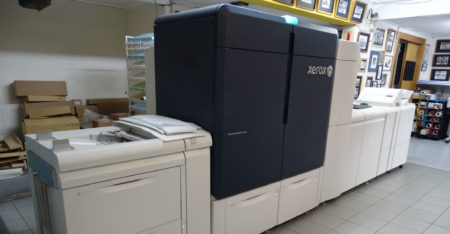
By Craig Wilson
Last week, Eastman Kodak filed for Chapter 11 bankruptcy protection. How did the Rochester-based company that made photography accessible, affordable and ubiquitous go from being unbeatable to broke?
It wasn’t hubris or avarice that prompted Kodak’s decline, but rather complacence. It’s easy to feel invincible when one utterly dominates one’s chosen industry: just ask Nokia.
Kodak’s original slogan was “You press the button, we do the rest”. Unfortunately, the digital world means there’s no longer a “rest” for it to do.
Kodak missed a number of golden opportunities. It could have dominated the digital market, but it underestimated the impact digital photography would have.
You’d think with the impact Polaroid had — and which Kodak also underestimated — it would have learnt its lesson. It didn’t. The potential and appeal of instant photography was something Kodak realised far too late.
In 1975, Kodak pioneered the first digital camera but the board couldn’t see the potential and, remarkably, the project was shelved. This is perhaps somewhat understandable when one considers that around that time the company accounted for 90% of US film sales and 85% of camera sales.
Kodak didn’t only pioneer consumer photography; it pioneered a new business model where future sales could cover immediate losses. Kodak’s fortune wasn’t built on cameras; it was built on consumables and the far higher margins they offered.
As with printer cartridges and razor blades, Kodak could afford almost to give cameras away knowing that outside of Asia almost every camera and photo lab on earth used its products, often exclusively.
In the heady days of film, Kodak’s only real rival was Japan’s Fujifilm. In 1984, the Japanese company got its foot firmly through the door in the US when it landed a sponsorship deal for the Summer Olympics in Los Angeles.
Today, Fujifilm — unlike its Rochester rival — is weathering the digital storm with aplomb. Though it continues to make film, it also makes the well-received FinePix range of compact digital cameras that includes last year’s X100 — essentially a digital rangefinder camera and one of the most talked about digital cameras in years.
Although Kodak eventually started making digital cameras and printers to go with them, it hasn’t managed to achieve significant market traction with either. This is despite the fact that in 1986 Kodak made the first megapixel sensor, capable of producing a 5×7 (12,5cm x 17,5cm) print. This was the digital equivalent of the cornerstone of its business: film.
Unbeknownst to many, Kodak kept making digital sensors. German manufacturer Leica used a Kodak sensor in its M8 camera in 2006 in a move Kodak hoped would see it associated once more with high-end equipment.
And, in 2008, it developed a 50-megapixel sensor that it claimed could show an object the size of a laptop in an aerial photo of an area measuring almost 2,5km across.
Nevertheless, despite innovating in the sensor space, Kodak failed by slipping off the consumer radar. It may have made the essential component for countless manufacturers’ digital cameras, but consumers were oblivious to this, and whether it’s music or film or photography, the margins in digital are slim.
In November last year, Kodak sold its sensor business to Platinum Equity for an undisclosed figure in a move many suspected (correctly) at the time was intended to fund a restructuring and stave off bankruptcy.
In the interim, Kodak thought there was still money to be made from film in emerging markets. It clung to analogue in a world that was bulldozing its way towards digital. It couldn’t have chosen a worse path.
- Craig Wilson is senior journalist at TechCentral
- Subscribe to our free daily newsletter
- Follow us on Twitter or on Google+ or on Facebook
- Visit our sister website, SportsCentral (still in beta)




